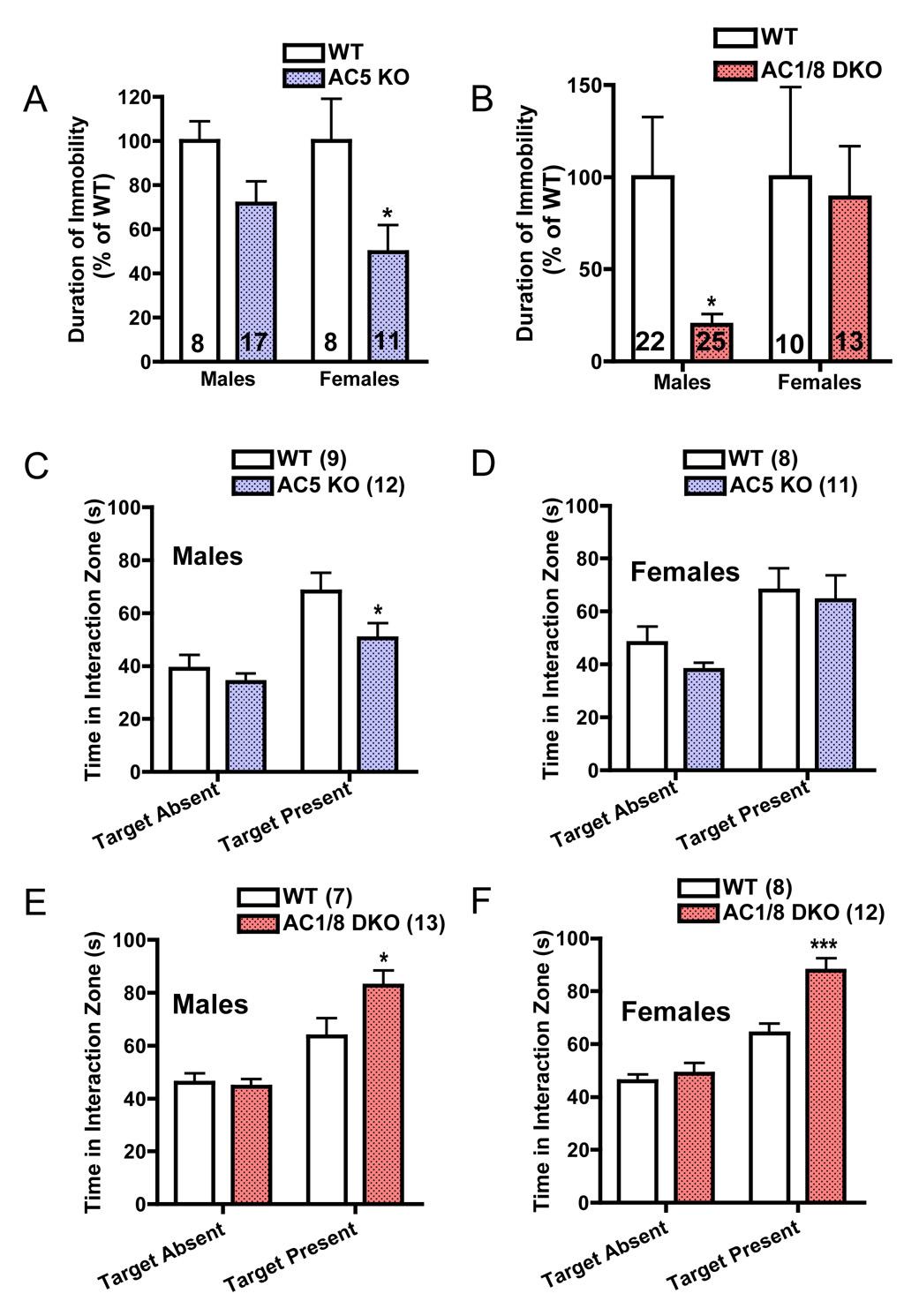Figure 3.
A,B: Durations of immobility during the last 4 min period of forced swim testing (FST, 6 min test) measured by an experienced observer blind to condition. AC5KO mice spent significantly less time immobile than their wild-type counterparts (genotype main effect, F1,39 = 9.71, p<0.01), with a prominent phenotype emerging in females. AC1/8DKO mice also displayed an decreased immobility on the FST (genotype main effect, F1,71 = 3.993, p<0.05), an effect mainly observed in males. C, D: In a two-trial social interaction test (see Methods and Materials), male AC5KO mice were significantly less interactive than WT mice (genotype × target interaction, F1,38 = 4.68, p<0.05). This effect was not observed in females (genotype × target interaction, F1,38 =0.91, p>0.3). E, F: AC1/8DKO mice were significantly more interactive than WT mice, and this effect was observed both in males (genotype × target interaction, F1,36 = 2.92, p<0.05) and females (genotype × target interaction, F1,36 =9.78, p<0.01). Data are presented as means + SEM (sample size denoted within bars), with * indicating significant post-hoc differences (*:p<0.05, ***:p<0.001).

